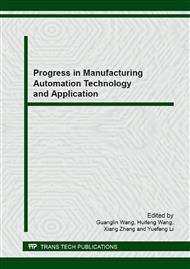p.216
p.220
p.224
p.228
p.234
p.241
p.248
p.253
p.259
Crashworthiness Design Analysis of Vehicle Door Using Simulation Experiment Design and Multi-Objective Genetic Algorithm
Abstract:
A FE model is built based on one vehicle door, the thickness of door's main components for absorbing energy is considered as the design variable. Firstly, a screening experiment is implemented by using Plackett-Burman design, and the prominent components for crashworthiness are selected. Then, the Latin hypercube experiment design is performed again. The approximation model of polynomial response surface is built by the Least Squares Regression according to the experimental results. At last, the approximation model, of which the objective function are the maximum internal energyand the minimum mass sum of all variables, and the constrain function is the maximum impact force, is optimized by using multi-objective Genetic Algorithm (MOGA). The results of the optimization show that the mass of all design variables and the max impact force are reduced by 4.12% and 4.43%, respectively, and the maximum internal energy is increased by 2.3%. The crashworthiness of vehicle door is improved, and it provides the technological support for the safety and light weight design of the whole vehicle door.
Info:
Periodical:
Pages:
234-240
Citation:
Online since:
September 2013
Authors:
Keywords:
Price:
Сopyright:
© 2014 Trans Tech Publications Ltd. All Rights Reserved
Share:
Citation:


